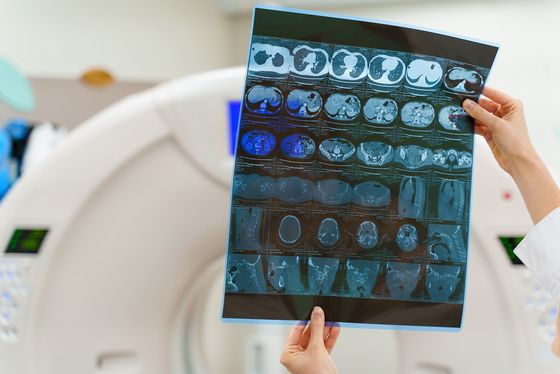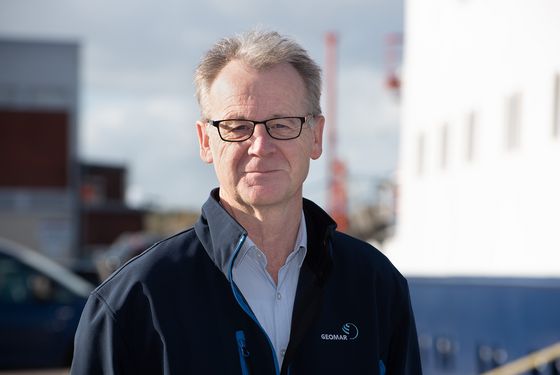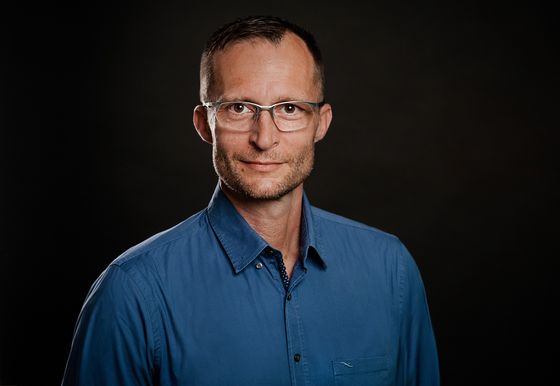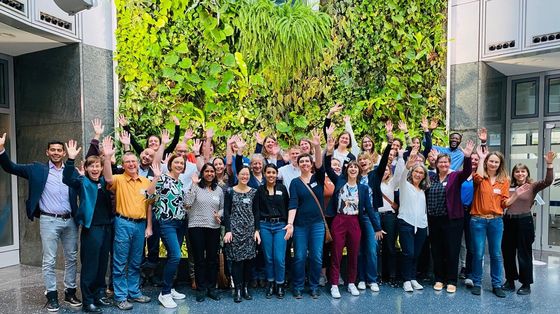|
||||||||
|
||||||||||||||||||||||||
|
|
Whether you’re enjoying a holiday today or just having an ordinary Thursday, stocking up on candy for halloween or locking the door—there’s one thing you all have in common: you’ve taken a moment to check out the latest Helmholtz newsletter, and we’re delighted! And for those who may have missed yesterday’s special newsletter, here’s the link to our interview with Martin Keller, who was confirmed by the Senate of the Helmholtz Association as the designated successor to current President Otmar D. Wiestler on Wednesday. Enjoy reading! |
|
|
|
|||||||||||||||||||||||
|
|
||||||||||||||||||||||||||||||
|
|
|
With advances in personalized oncology, urological guidelines are becoming increasingly complex. Whether in the tumor board, on the ward or in the practice, a precise second-opinion system for medical decisions in urology could support doctors in evidence-based and personalized care, especially when time or capacity is limited. Large language models (LLMs) such as GPT-4 have the potential to retrieve medical knowledge and answer complex medical questions without additional training. However, their applicability in clinical practice is often limited due to outdated training data and a lack of explainability. To overcome these hurdles, a team led by Titus Brinker of the DKFZ developed “UroBot”, a specialized chatbot for urology that was supplemented by the current guidelines of the European Society of Urology. UroBot-4o answered questions on the specialist examination correctly 88.4 percent of the cases, outperforming the most up-to-date model GPT-4o by 10.8 percentage points. This means that UroBot not only outperforms other language models, but also exceeds the average performance of urologists in the specialist examination, which is reported in the literature as 68.7 percent. In addition, UroBot shows a very high degree of reliability and consistency in its answers. UroBot’s answers can be verified by clinical experts, since the software identifies the decisive sources and text sections: “The study shows the potential of combining large language models with evidence-based guidelines to improve performance in specialized medical fields. The verifiability and the very high accuracy at the same time make UroBot a promising assistance system for patient care. The use of comprehensible language models like UroBot will become extremely important in patient care in the next few years and will help to ensure guideline-based care across the board, even as therapy decisions become increasingly complex,” says Brinker. The research team has published the code and instructions for using UroBot to enable future developments in urology, as well as in other medical fields.
Hydrogen: Breakthrough in alkaline membrane electrolysers Neurotoxic effects of Chemicals Add Up New drugs from toxic birds |
|
Our work revolves around direct interaction with the central object of our research – the ocean. Like many of my colleagues at GEOMAR, I have spent countless months at sea on expeditions around the globe. Whether aboard deep-sea drilling vessels, research ships of all sizes, or even in the submersible ALVIN, marine research is always a “team effort” and an incredible learning experience. The role of technology in marine research has grown significantly over the years. Today, we have access to tools, like autonomous vehicles, that would have been unimaginable 30 years ago. Many of the technological innovations developed at GEOMAR have practical applications beyond marine research, in other sectors of society. Helping to facilitate this knowledge and technology transfer has been a rewarding challenge for many years and a task I have greatly enjoyed.
The growing amount of plastic waste in the oceans is one of the most serious threats to the marine environment today. Tackling this issue is a monumental challenge, but one for which there may be technological solutions. With unlimited financial resources, I would launch an innovation competition similar to the X-Prize Foundation’s approach to addressing other “Grand Challenges”. The goal would be to develop and implement innovative technological solutions to reduce various types of plastic waste in the oceans.
I would love to meet Satoshi Nakamoto, the creator of Bitcoin. I’d ask him if, back in 2008, he could have anticipated just how far-reaching the impact of his white paper would be. Since Satoshi may very well be a fictional or anonymous person who might never be identified, my second choice would be Sam Altman. As the co-founder and CEO of OpenAI, Altman leads one of today’s most influential AI companies, whose innovations will undoubtedly shape our future and significantly affect our daily lives. |
|
|
|
With the continued Russian aggression against the country and the increasing concentration of attacks on civilian infrastructure like power and heating plants, Ukraine’s civilian population is facing serious problems. Since the beginning of the attacks on energy infrastructure and worsened by the strikes in March and April 2024, more than two-thirds of the country’s power-generating facilities have now been destroyed, damaged or lie in areas controlled by Russia. Our analysis shows that without substantial countermeasures, this could result in an undersupply of up to 18 TWh (20 percent of the already reduced demand) and temporary and regional power cuts up to 90 percent of the time. While the energy deficit was considered difficult but manageable in summer, the coming winter threatens to make the situation dramatically worse. 70 percent of Ukrainian households are supplied with heat from centralized plants, half of which are combined heat and power plants. The supply cannot be guaranteed for the coming winter months. Many of the combined heat and power plants and cogeneration plants are damaged and there isn’t enough electricity to go around, which means that control systems and pumps can temporarily shut down. As a result, poorly insulated homes, particularly in urban areas, have less heating. This leads to unacceptable conditions for residents – especially children, the elderly and the sick – and will drive more people to flee, even from areas not directly affected by the fighting. Our analysis shows that with the aid of targeted measures, planned power cuts could be almost entirely avoided: power generation systems would need to be repaired as quickly as possible, decentralized electricity and heat generation plants would need to be added, and transmission capacities with Poland, Romania, Hungary and Slovakia would need to be expanded. In addition to time, skilled personnel, transport capacities and financial resources, this would above all take coordinating structures and reliable market and administrative structures. In order to attract domestic and foreign investment for rebuilding in Ukraine, the country must undertake structural reforms of the energy markets. This includes further liberalization by securing market mechanisms and building up administrative capacities. In this regard, it is also important to empower municipalities to implement feasible and necessary solutions on the ground. A yet-to-be-established “energy coordination center” could play a vital part – by improving the coordination of efforts both within Ukraine’s borders and between it and its partners, while also increasing the flow of information between the stakeholders. As a result, decisions could be made more quickly, and the use of resources could be better planned and monitored. Such an energy coordination center would help to rebuild Ukraine more efficiently and effectively. This would require strong political legitimacy within Ukraine and with Western partners; to establish that legitimacy, key players from the European energy sector would have to be involved. Germany should work to ensure that such structures are rapidly created and expanded by Ukraine in coordination with its Western partners. It is important now for Germany and the EU to not only support Ukraine militarily, but also to help restore its energy infrastructure. The sooner the energy network is stabilized, the lower the risk of a humanitarian catastrophe, which could have far-reaching consequences not only for Ukraine, but also for Europe in the form of intensified migration. About the Initiative: |
|
|
|
Across the Helmholtz Association, roughly 9,000 individuals are now pursuing their doctorates and another 3,000 are advancing their careers as postdocs. At our graduate schools, international research schools, and postdoc career centers, a total of 40 coordinators are guiding them on their way. In October, these coordinators gathered at the Helmholtz Office in Berlin to exchange notes on how to further enhance career development in science. |
Published by: Helmholtz Association of German Research Centres, Anna-Louisa-Karsch-Str.2, 10178 Berlin Editors: Sebastian Grote, Franziska Roeder, Martin Trinkaus Photo credit: Phil Dera (Editorial) No subscription yet? Click here to register If you no longer wish to receive our newsletter, simply click here: Unsubscribe © Helmholtz
|
![[Translate to Englisch:] [Translate to Englisch:]](https://www.helmholtz.de/assets/helmholtz_gemeinschaft/_processed_/5/5/csm_Franziska_Roeder_Monthly_600x600_fb078b8a96.png)



